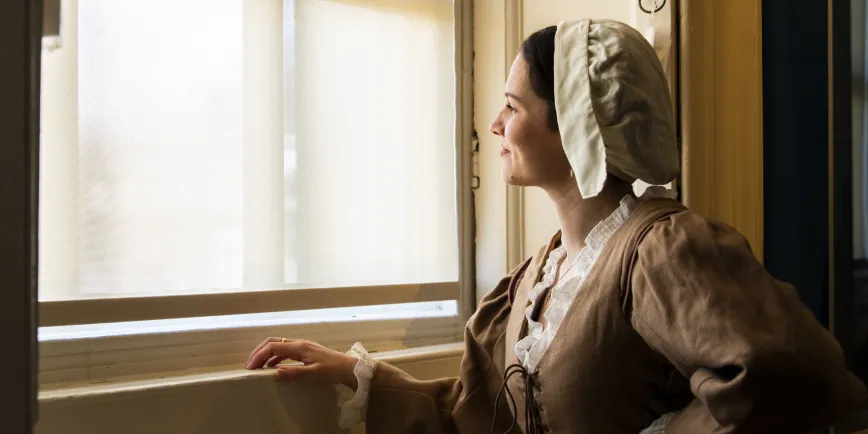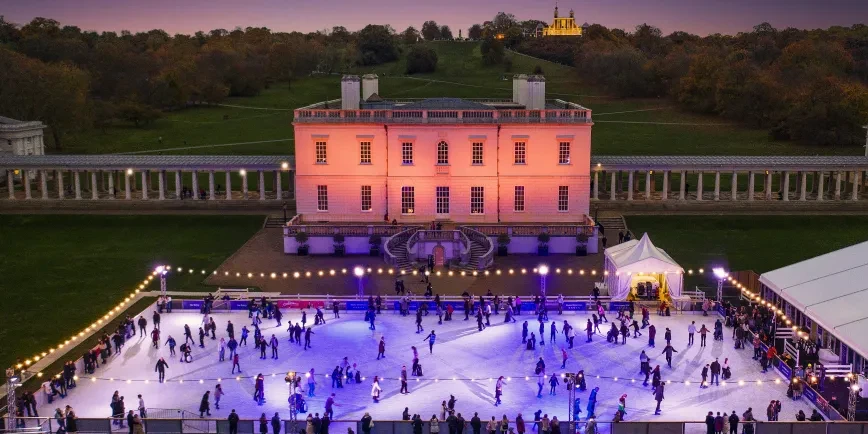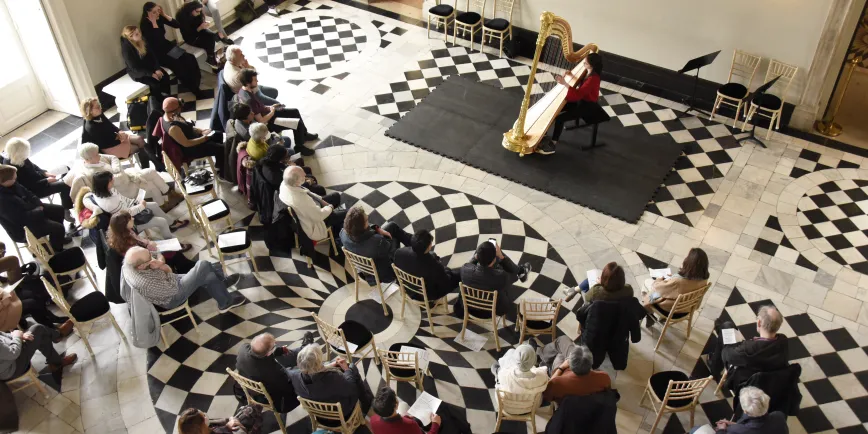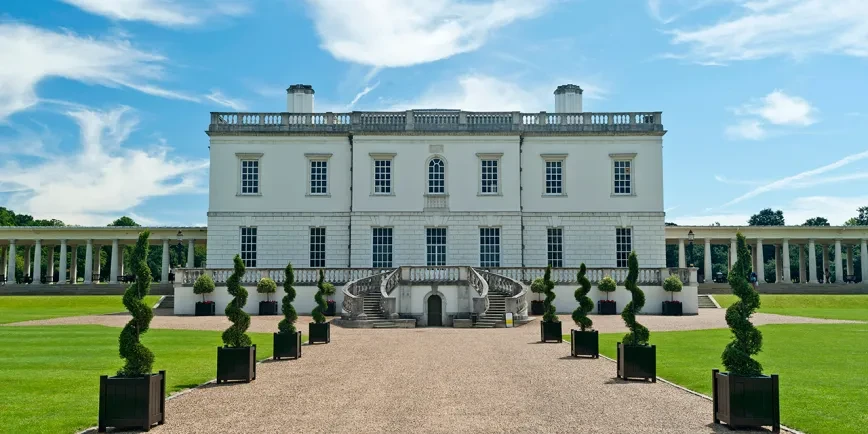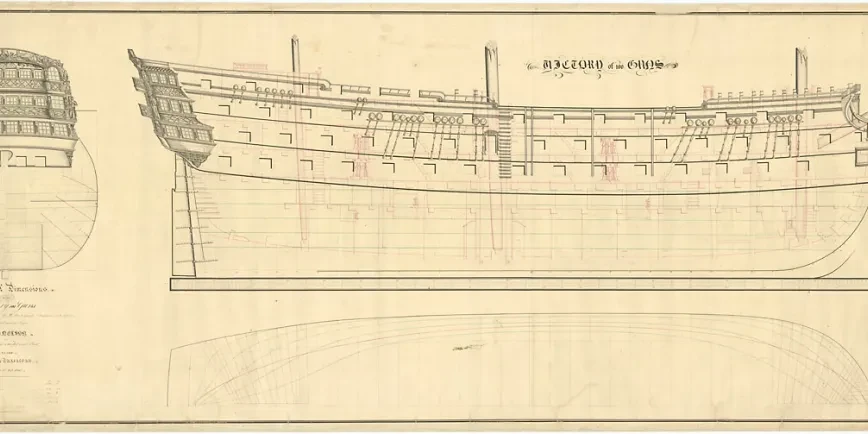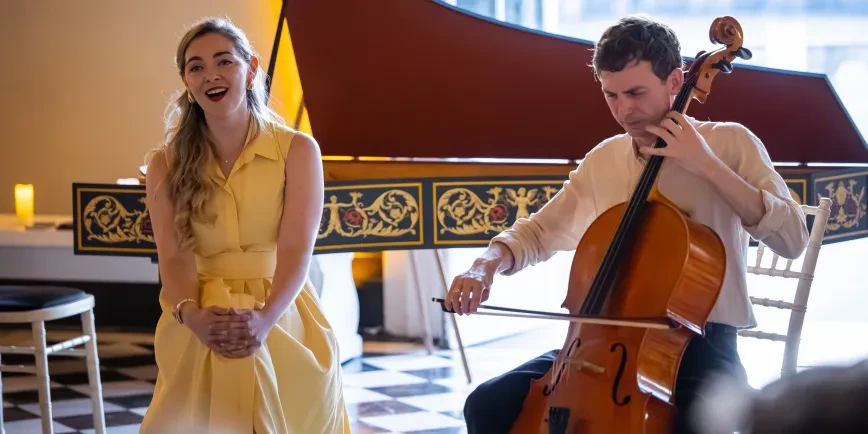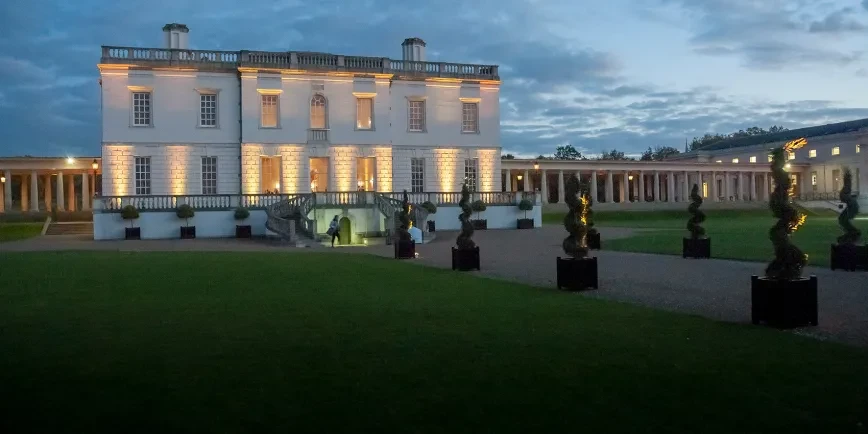
Essential information
| Type | Talks and tours |
|---|---|
| Location | |
| Date and times | Wednesday 7 January 2026 | 1pm–1.30pm |
| Prices | Free |
This talk will take place in the Headmaster's Drawing Room and Dining Room, located on the ground floor of the Queen's House. It is part of a series of talks responding to the themes of J.M.W. Turner's The Battle of Trafalgar, which has recently been installed in the room.
By 26 October 1805, five days after Nelson’s flagship first made contact with the enemy fleets at Trafalgar, 23 French and Spanish ships and over 1,000 cannon lay at the bottom of the Atlantic. They were victims both of the superiority of the Royal Navy, and a storm that devastated the British attempts to bring home their prizes. In the face of the immense human tragedy that Turner so effectively demonstrates, the loss of these wooden walls seems insignificant. The cost to the nations involved, and to the British sailors who had fought to save them, however, was immense.
This talk will explore both the process of constructing the warships of the Napoleonic era, as well as the economics and logistics of maintaining a fleet that could meet an enemy at a moment’s notice. In outlining the true costs of these immense machines, it will show how the capture of enemy ships, and the subsequent distribution of the prize money from their sale, played a significant role in battles such as Trafalgar.
About the speaker
Fern Aldous is the Assistant Curator of Maritime Technology at the National Maritime Museum. Her area of interest is in ship design and construction from the classical world through to the Napoleonic era and the process of representing ships in plans and models.
Salons in the Queen's House

2025 marks the 250th anniversary of the birth of J.M.W. Turner, one of Britain’s most celebrated artists. To honour the occasion, his largest artwork, The Battle of Trafalgar, is the centrepiece of a new display in the Queen’s House.
This talk is part of a salon series responding to the themes of the painting.
The term 'salon' was used historically to describe social gatherings in the domestic sphere. Participation was open to a range of individuals, and women often acted as hosts. Salons were alternative spaces for learning, debate, and the exchange of ideas. We continue to explore this tradition at the Queen's House.
Speakers at our Salons include artists, researchers, curators and creative practitioners. Their talks bring to light new insights and share different perspectives.
What’s on


